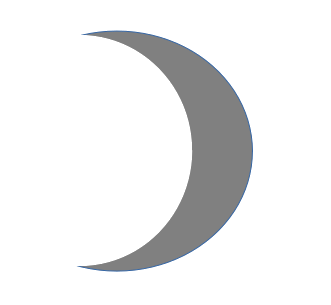



Ce tableau récapitule les primitives directement déterminées à partir de l'opération inverse de la dérivée, à savoir :
|
$$ \underline{condition} $$
|
$$ \underline{primitive \ g\textit{é}n\textit{é}rale} $$
|
|---|---|
|
$$ \underline{fonctions \ usuelles} $$
|
|
|
$$ \forall x \in \mathbb{R}, $$
|
$$ \int^x dt = x$$
|
|
$$ \forall x \in \mathbb{R}, $$
|
$$ \int^x t \ dt = \frac{x^2}{2}$$
|
|
$$ \forall x \in \hspace{0.05em} \mathbb{R}^*_+,$$
|
$$ \int^x \sqrt{t} \ dt = \frac{2}{3} x^{\frac{3}{2}}$$
|
|
$$ \forall x \in \hspace{0.05em} \mathbb{R}^*_+,$$
|
$$ \int^x \frac{1}{\sqrt{t}} \ dt = 2\sqrt{x} $$
|
|
$$ lorsque \ x \ est \ d\textit{é}fini $$
|
$$ \int^x t^n \ dt = \frac{x^{n+1}}{n+1}$$
|
|
$$\forall x \in \mathbb{R}, \enspace \forall n \in \mathbb{R_+^*},$$
|
$$ \int^x n^t \ dt = \frac{ n^x}{ln(n)} $$
|
|
$$ \forall x \in \mathbb{R}, $$
|
$$ \int^x e^t \ dt = e^x$$
|
|
$$ \forall x \in \hspace{0.05em} \mathbb{R}^*, $$
|
$$ \int^x\frac{dt}{t} = ln|x| $$
|
|
$$ \forall x \in \mathbb{R^*}, \enspace \forall n \in \mathbb{R^+}, $$
|
$$ \int^x log_n|t| \ dt = ln(n) \times log_n|x| $$
|
|
$$ \underline{fonctions \ trigonom\textit{é}triques} $$
|
|
|
$$ \forall x \in [-1, \hspace{0.2em} 1], $$
|
$$ \int^x \frac{1}{\sqrt{1 - t^2}} \ dt = arcsin(x) = - arccos(x) $$
|
|
$$ \forall x \in \mathbb{R}, $$
|
$$ \int^x \frac{1}{\sqrt{1 + t^2}} \ dt = arcsinh(x) $$
|
|
$$ \forall k \in \mathbb{Z}, \enspace \forall x \in \biggl[ \mathbb{R} \hspace{0.2em} \backslash \Bigl\{ \frac{\pi}{2} + k\pi \Bigr\} \biggr] $$
|
$$ \int^x \Bigl[ 1 + tan^2(t) \Bigr] \ dt = \int^x sec^2(t) \ dt = tan(x) $$
|
|
$$ \forall x \in \mathbb{R}, $$
|
$$ \int^x \frac{1}{1 + t^2} \ dt = arctan(x) $$
|
|
$$ \underline{op\textit{é}rations \ sur \ les \ fonctions} $$
|
|
|
$$ \forall a \in \mathbb{R}, \ \forall x \in \hspace{0.05em} \mathcal{D}_f, $$
|
$$ \int^x f(at) \ dt = \frac{1}{a} F(ax) $$
|
|
$$ \forall (\lambda, \mu)) \in \hspace{0.05em} \mathbb{R}^2, \ \forall \bigl(u(x), v(x)\bigr) \in \hspace{0.05em} \mathbb{R}^2, $$
|
$$ \int^x \biggl[ \lambda u(t) + \mu v(t) \biggr] \ dt = \lambda U(x) + \mu V(x) $$
|
|
$$ \forall u(x) \in \hspace{0.05em} \mathbb{R}^*, $$
|
$$ \int^x \frac{u'(t)}{u(t)} \ dt = ln\bigl|u(x)\bigr| $$
|
|
$$ \forall u(x) \in \hspace{0.05em} \mathbb{R}^*, $$
|
$$ \int^x \frac{u'(t)}{u^2(t)} \ dt = - \frac{1}{u(x)} $$
|
|
$$ \forall u(x) \in \hspace{0.05em} \mathbb{R}^*, $$
|
$$ \int^x \frac{u'(t)}{ 2\sqrt{u(t)}} \ dt = \sqrt{u(x)} $$
|
Dans cette partie, on fera apparaître la fonction \( y(x) \) sous sa forme simplifiée \( y\).
Soit \( y \) une fonction dérivable sur un intervalle \( I \) et \( (a, b) \in \hspace{0.03em} \mathbb{R}^2\) deux nombres réels.
Soit \( (E) \) une équation différentielle linéaire d'ordre
On appelle \( (H) \) son équation homogène associée :
\( y_h = 0 \) est solution, mais considérant \( y_h \) différente de la fonction nulle, la fonction \(y_h\) suivante sera solution homogène de \( (H) \) :
À partir de l'équation homogène \( (H) \), on a :
Si \( y = 0 \), alors \( y_h = 0 \) est solution évidente, mais considérons la fonction \( y \) différente de la fonction nulle.
Tentons de trouver la solution \(y_h\) qui correspond :
On reconnaît la dérivée de fonction composée \( ln(u) \) :
Alors, en calculant sa primitive,
En passant maintenant à l'exponentielle :
On a alors comme solution homogène pour \( (H) \) :
La fonction \(y_p\) sera solution particulière de \( (E) \) :
En trouvant une solution particulière \(y_p\) pour \( (E) \), on peut alors additionner ces deux solutions, et déterminer une solution totale de \( (E) \) :
Soit,